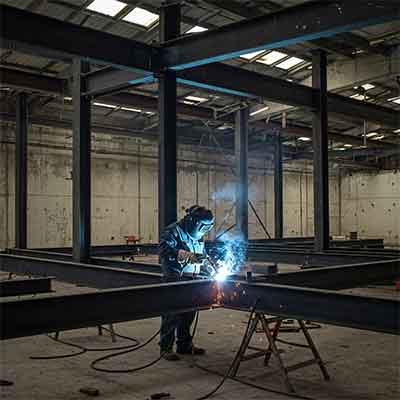

Stick welding is another popular form of arc welding. its versatility, allows it to be used on a range of metals, including steel, stainless steel, and cast iron materials
We offer a number of structural steel welding services for the Hamilton, Burlington, Mississauga and Toronto area, including i beam installation and joint reinforcements.
We offer a number of structural steel welding services for the Hamilton, Burlington, Mississauga and Toronto area, including i beam installation and joist reinforcements.
Stick welding is another popular form of arc welding. its versatility, allows it to be used on a range of metals, including steel, stainless steel, and cast iron materials
Home>Blog

Stick welding is commonly used for structural steel, pipeline construction and the metal industry. It offers several advantages to Its welders. Let's have a look at its versatility, which allows it to be used on a range of metals, including steel, stainless steel, and cast iron materials. It can be incorporated in all welding positions, whether it be a flat, horizontal, vertical, or overhead position – making it adaptable to diverse project requirements. This type of welding procedure is relatively forgiving when it comes to dirty or rusty metals, which can be a common problem when performing repairs.
Stick welding remains a fundamental and widely used welding process. Its versatility, portability, and cost-effectiveness makes it a valuable tool to welding shops and mobile welding trucks. While it requires a high level of skill to master, the ability to weld in various environmental conditions and on a wide range of metals makes it a valuable asset for welding companies.
Stick welding dates back to the 1800s, where a British chemist and inventor Sir Humphry Davy developed an arc between two carbon electrodes using a battery. Gas welding and cutting was shortly introduced, and as we moved into the 1900s, there was a major breakthrough when Oscar Kjellberg of Sweden introduced the coated electrode, which resembled a stick. The early made stick electrodes were made by dipping iron wires into thick mixtures of carbonates and silicates.